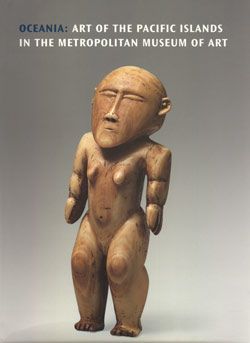Lidded Bowl (Kotue)
The distinctive form of the lidded Marquesan bowls known as kotue
suggests the body and tail of a bird adorned with a fully modeled human
head. Only about a dozen of these remarkable vessels are known. Versatile
as well as elegant, bird-shaped bowls were first described by European
explorers in the eighteenth century, and a number of different functions are
assigned to them in the historical sources. Fitted with removable lids to
protect their contents, kotue were used to store a variety of items including
popoi, a paste made from pounded breadfruit that is a staple of the
Marquesan diet. They were also used to safeguard ornaments and other
valuables as well as 'eka (turmeric), a precious yellow-orange powder used
to adorn the skin.
This image cannot be enlarged, viewed at full screen, or downloaded.



